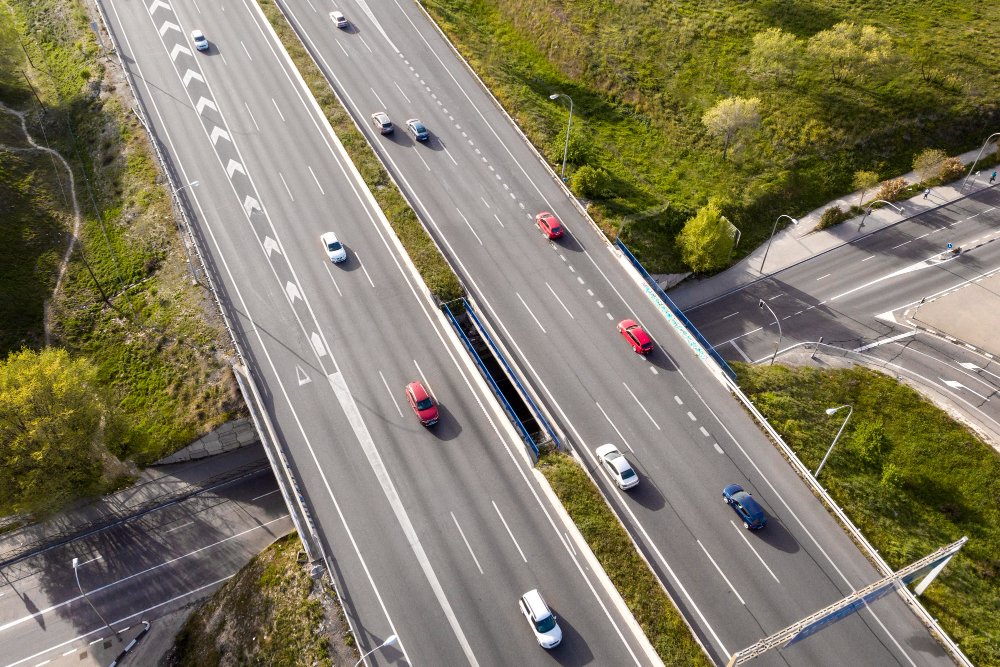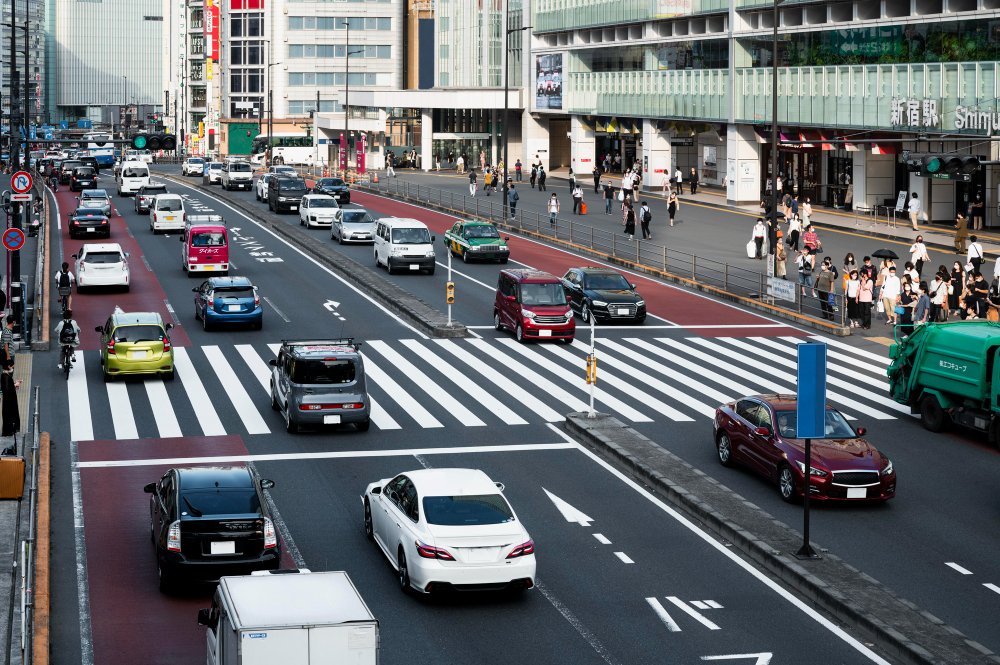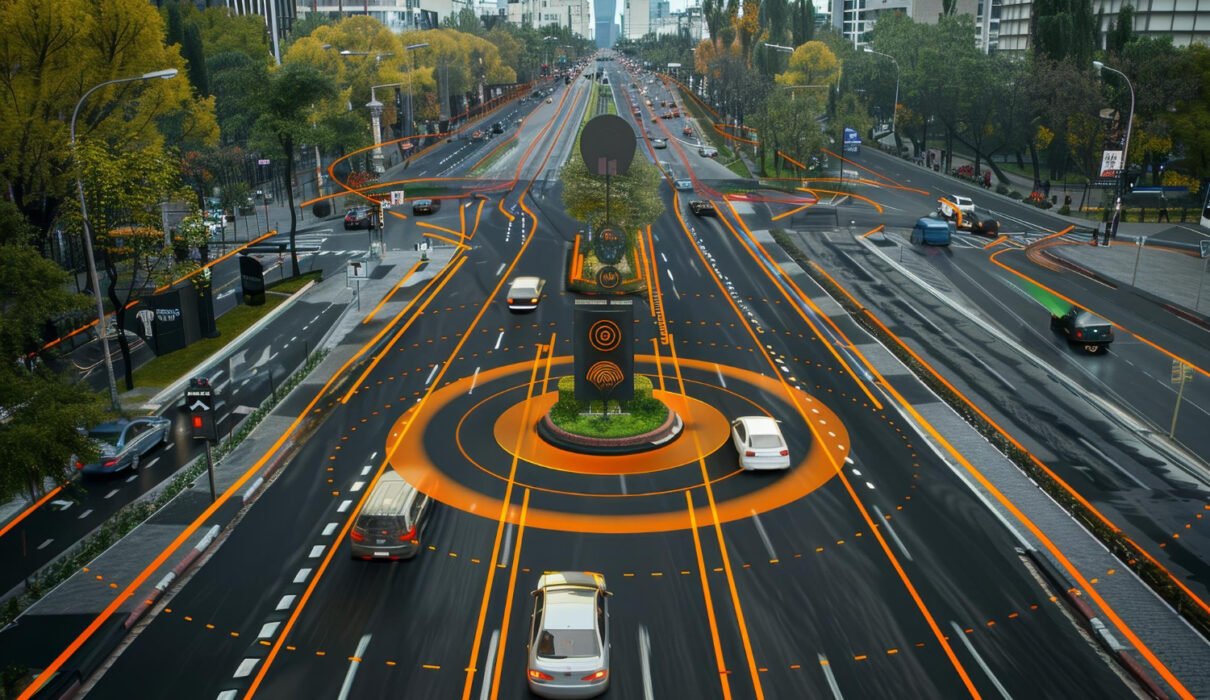Introduction:
When driving on motorways or major roads, you may have encountered traffic management systems designed to keep the flow of vehicles moving smoothly, even during roadworks or emergencies. One such system is the contraflow system, which can sometimes confuse unfamiliar drivers. In this guide, we’ll delve into what a contraflow system is, how it operates on motorways, and what steps you should take when driving through one. By the end of this article, you’ll have a solid understanding of the contraflow system and be equipped with practical tips for navigating these sections of roadways safely.
What is a Contraflow System?
A contraflow system is a temporary traffic management solution used to keep traffic moving during road maintenance, construction, or accidents. It is typically employed on motorways, dual carriageways, or busy roads, where one side of the road is closed. In this setup, traffic is directed onto the opposite side of the road, which would usually flow in the other direction. In simple terms, vehicles traveling in opposite directions share the same carriageway.
Contraflow systems are implemented to minimize congestion and keep traffic flowing while critical work is carried out on the road. Instead of completely shutting down a section of the road, which would cause significant delays and rerouting, the contraflow system allows drivers to continue using the road, albeit in a modified manner.
It’s important to note that contraflow systems are designed with clear road markings, temporary barriers, and signs to ensure that drivers stay within their designated lanes and follow the new traffic patterns safely.
The Purpose of a Contraflow System
The primary goal of a contraflow system is to maintain traffic flow during road closures, emergencies, or maintenance without causing significant disruption to drivers. Contraflow systems are generally used in situations where closing off a road or motorway entirely would lead to substantial delays, reroutes, or even pose dangers to other road users.
This system is often seen during the following events:
- Roadworks: When major road repairs or infrastructure upgrades are underway, contraflow systems allow for continuous traffic flow, reducing the risk of traffic jams.
- Emergency Situations: In case of accidents or road obstructions, contraflow systems help keep the road open for emergency services and other vehicles.
- Special Events: Large public gatherings or events might require contraflow arrangements to handle surges in traffic, ensuring safety and minimizing congestion.
Contraflow System on a Motorway
A contraflow system is particularly effective on motorways, where multiple lanes of traffic are usually traveling at high speeds. When roadworks or an emergency necessitates the closure of a lane or an entire side of the motorway, a contraflow system may be introduced. Under these conditions, traffic is rerouted onto the opposite carriageway.
In a contraflow system on a motorway, drivers from both directions share one side of the road, with temporary barriers separating them. The number of lanes available is usually reduced, and speed limits are lowered to ensure safety. This setup requires drivers to be highly alert, as traffic conditions will differ from the usual motorway experience.

Key Features of a Contraflow System on a Motorway
- Reduced Lane Availability: Motorists may have fewer lanes to use when traveling through a contraflow system. For instance, a three-lane motorway might be reduced to two lanes or even one lane on each side.
- Barriers to Safety: Temporary barriers, cones, and signs are set up to direct vehicles and prevent head-on collisions between vehicles traveling in opposite directions.
- Lower Speed Limits: Speed limits are often reduced, sometimes as low as 50 mph or less, depending on the extent of roadworks or other disruptions.
- Increased Risk of Congestion: With fewer lanes and lower speed limits, the risk of traffic congestion increases. Therefore, drivers are advised to be patient and cautious.
What Should You Do When You’re Using a Contraflow System?
Driving through a contraflow system can feel daunting, especially for those who haven’t experienced it before. However, following a few simple guidelines can ensure you navigate it safely and without stress.
1. Pay Attention to Signage
The first and most important rule when driving through a contraflow system is to pay close attention to road signs and markings. These will guide you through lane changes, and speed reductions, and provide information about upcoming hazards or closures.
Temporary signs will be visible and may indicate:
- Speed limits specific to the contraflow area
- Directions to alternative routes or exits
Being alert to these signs ensures you don’t inadvertently drive in the wrong lane or miss a crucial exit.
2. Follow the Speed Limit
Speed limits are lower in contraflow systems to ensure the safety of all road users, including construction workers, other drivers, and emergency personnel. It is critical to adhere to these limits, as driving too fast can increase the risk of accidents, especially in unfamiliar or narrow lane conditions.
Often, speed cameras are temporarily installed in these areas to enforce the lower limits, so following the prescribed speed can also help avoid costly fines.
3. Stay in Your Lane
In contraflow systems, lane discipline is crucial. The lanes may be narrower than usual, and the opposing traffic may be only a few feet away, separated by cones or barriers. Any swerving or lane changes without signaling can create dangerous situations.
Resist the urge to overtake unless it is safe and marked as permissible. Many contraflow systems prohibit overtaking due to the narrow lanes and reduced visibility, so it’s best to stay in your designated lane and proceed cautiously.

4. Be Prepared for Delays
Contraflow systems are typically implemented in response to roadworks or accidents, which can naturally slow down traffic.
Additionally, if you’re using a GPS navigation system, it’s a good idea to check for live traffic updates. Some apps may offer alternative routes to help you avoid areas with heavy traffic or congestion caused by contraflow systems.
5. Give Extra Space to Large Vehicles
Large vehicles, such as trucks and buses, may struggle more in contraflow systems due to their size. If you find yourself near a large vehicle, give them extra space and avoid driving alongside them for long stretches. These vehicles may need more room to navigate through tight lanes or curves.
Being mindful of the difficulties large vehicles face will help you stay safe and prevent accidents.
6. Stay Calm and Focused
Driving through a contraflow system requires a higher level of concentration than usual. Stay calm and keep your attention on the road at all times. Avoid distractions like using your phone, eating, or adjusting your radio while navigating the area. Take deep breaths, keep your focus on the road, and drive at a steady pace.
Conclusion
The contraflow system is a practical solution for maintaining traffic flow during roadworks, emergencies, or other disruptions on motorways and busy roads. While it may initially seem complicated, understanding its purpose and learning how to navigate it safely can significantly reduce the stress of driving through these temporary setups. Being prepared and informed is the key to successfully handling any driving situation, including the contraflow system. So, the next time you come across one, you’ll be ready to navigate it with confidence and ease.
FAQs about the Contraflow System
1. What is a contraflow system?
A contraflow system temporarily uses lanes reserved for opposite-direction traffic to keep vehicles moving during roadworks or disruptions.
2. Why is a contraflow system used?
It minimizes road closures and traffic disruptions during maintenance, accidents, or events.
3. What should I do when driving through a contraflow system?
Reduce speed, stay in your lane, follow signs, and maintain a safe distance from other vehicles.
4. Are speed limits reduced in a contraflow system?
Yes, speed limits are typically lower for safety reasons.
5. Can I change lanes in a contraflow system?
No, stay in your designated lane to avoid accidents.
Discover why FUSEBAY is your next favorite channel! Dive into our latest video for captivating insights and engaging content that you won’t want to miss— join the FUSEBAY community today!







